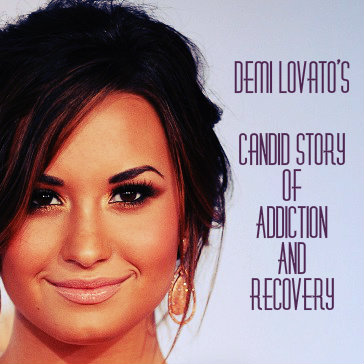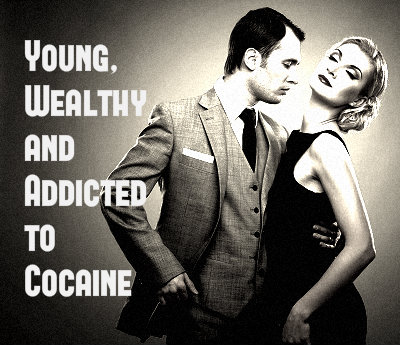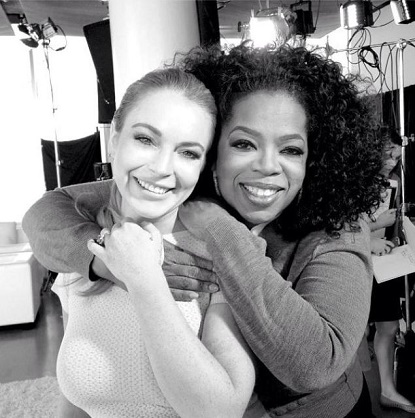13 Jan 2014
Demi Lovato’s Battle With Addiction And Mental Illness – How Her Candid Story Can Help Teens
Actress and singer Demi Lovato has made a name for herself starring in television shows like The X-Factor and Sonny With A Chance. However, recently the 21-year-old star has been promoting her new memoir, Staying Strong: 365 Days a Year. The book details the young celebrity’s battles with several mental health conditions, including a drug addiction, eating disorder and alcohol abuse.
Lovato’s Personal Struggles
In her memoir and through a series of interviews, Lovato revealed her disorders as well as her triumphs. They include the following:
 Drug addiction – The star has recounted how, during the peak of her addiction, she snorted cocaine practically every 30-60 minutes.
Drug addiction – The star has recounted how, during the peak of her addiction, she snorted cocaine practically every 30-60 minutes.- Alcohol abuse – Lovato reports that by age 19 her alcohol abuse was serious enough that she was drinking a soda bottle filled with vodka in the morning.
- Cutting – She’s spoken openly about her struggle with self-mutilation, which began at the tender age of 11. Lovato says she made cuts on her wrists to cope with negative emotions.
- Eating disorder – The young celebrity recalls how she first battled an eating disorder around age 12 or 13, although she began to worry about her body image earlier. This was triggered by becoming the target of bullies who cruelly labeled her as “fat.” Over the years, her self-destructive behaviors included compulsive overeating as well as anorexia and bulimia.
- Bipolar disorder – Lovato recounts how, initially, manic periods made her a productive songwriter. However, the cycles of mania and depression also made it painfully difficult for her to control her emotions.
By age 19, these conditions had taken a serious toll on Lovato’s well-being. She reports having a nervous breakdown during a concert tour. At one point, she reportedly physically struck one of her back-up dancers. That’s when her family and management team did the intervention that compelled her to quit the tour and enter into treatment. Lovato initially received three months of inpatient treatment, and then continued her treatment in an outpatient program. It was only after treatment started that she was diagnosed with bipolar disorder [1-5].
Co-Occurring Disorder – Not Unique
Mental health disorders often co-occur, creating havoc in the lives of young individuals and their families. While the scope of Lovato’s conditions may seem sensational – alcohol, drugs, cutting, depression, and mania – the reality is that some teen girls and young women deal with these challenging disorders on a daily basis.
Anorexia nervosa affects up to 3.5% of women during their lifetime, while bulimia afflicts approximately 4% of females. Over 85% of those with eating disorders report first experiencing symptoms before the age 20 [6]. Teens and young women may restrict eating habits or binge and purge for a variety of reasons, from the desire to have the “perfect” body to the need to conform to athletic standards. The impact of an eating disorder on physical and emotional health is profound. These conditions have the highest mortality rate of any mental health disorder. For example, 20% of individuals with anorexia will die early from complications such as suicide or heart problems [6].
Other psychiatric conditions, like those Lovato struggled with, also have a negative effect on adolescent girls and young women, too. Research reviews suggest that patients with bipolar disorder have higher rates of bulimia. The opposite is true as well, with bulimic patients showing elevated rates of bipolar disorder [7]. Likewise, researchers have connected eating disorders with self-injury behaviors, such as cutting. In one study, 40% of adolescents with an eating disorder engaged in some type of self-injury. Those who practiced binging and purging, in particular, were more likely to self-harm than those who restricted food intake [8].
It’s also common for young people with mental health conditions to wrestle with substance abuse, just as Lovato did. A teenager or young adult overwhelmed by negative emotions may turn to substances to self-medicate their symptoms. For instance, bipolar disorder so frequently co-occurs with drug or alcohol abuse that some experts suggest that all young people with the condition should be assessed for substance abuse [9].
Lovato’s Encouraging Turn-Around
Lovato says she’s been open about her struggles because she wants other young girls to know their lives don’t need to be destroyed by addiction and mental health issues. In addition to talking with media outlets and writing a book, Lovato has also become a contributing editor to Seventeen magazine, with a focus on addressing eating disorders and the pressure teen girls often feel to be perfect [10]. Earlier this year, she also joined the Substance Abuse and Mental Health Services Administration (SAMHSA) to promote National Children’s Mental Health Awareness Day.
The popular young star’s efforts may serve to increase awareness of these issues among teen girls and young women. For example, they may help remove some of the stigma linked to conditions like depression or bipolar disorder, making it a little easier for someone to admit she needs help. Lovato’s openness may also teach some to recognize potential mental health disorders, including substance abuse, in their friends.
Additionally, her story may spark conversation about how the drive for physical perfection affects young women. Mass media and social networks have the power to convey unrealistic expectations about appearance. For example, the recent “thigh gap” trend has raised concerns because it may be causing some teens and young women to engage in unhealthy eating behaviors. They strive to become thin enough to create a noticeable space between their upper thighs. Lovato’s struggles with her own body image and the serious impact it’s had on her well-being may help some young people re-examine how they feel about their own bodies.
Reaching Out For Mental Health And Addiction Help And Healing
If you are a young woman dealing with mental health challenges, such as depression or self-harm, or a substance abuse problem – of if you know someone who is – contact a treatment center. The staff will help you determine appropriate treatment options. In addition, you’ll learn more about the intervention process and how it works to guide a person into treatment. Reach out for help today.
Read More About News In Celebrity Addiction
Resources:
[1] http://www.accesshollywood.com/demi-lovato-reveals-i-would-smuggle-cocaine-on-planes-exclusive_article_87694?l=OrMCe04Lcp0lOAfwFxnxvTU9tcbLHGqa8dh4YNgqILhpcs3rrYzNyvjFFpL2UWFdmIyLovYOHoUw9OHNN-yfr-hT3QzJwxXaiY0E6jGOmKBd9kI-phnp10szTd5p31H3oLl4-d20JIUZB21TTGT0B8HYTWG85jaN3LpDOgDuYyeE_Ucklv4NTCPit-xOC3I
[2] http://www.foxnews.com/entertainment/2013/12/10/demi-lovato-couldnt-go-without-cocaine-for-30-minutes-to-hour/
[3] http://abcnews.go.com/Entertainment/demi-lovato-interview-teen-star-opens-bulimia-cutting/story?id=13405090
[4] http://www.people.com/people/article/0,,20483380,00.html
[5] http://www.cnn.com/2011/SHOWBIZ/celebrity.news.gossip/01/28/demi.lovato.treatment/index.html
[6] http://www.anad.org/get-information/about-eating-disorders/eating-disorders-statistics/
[7] http://www.ncbi.nlm.nih.gov/pubmed/15935230
[8] http://www.sciencedirect.com/science/article/pii/S1054139X10003095
[9] http://psychcentral.com/lib/substance-abuse-and-bipolar-disorder/0001033
[10] http://www.seventeen.com/health/tips/demi-lovato-hub
12 Nov 2013
Jimmy Choo Co-Founder, Tamara Mellon’s Personal Story On Addiction, Sobriety And Success
It’s easy to fall into the trap of thinking that substance addiction is an endless cycle that determines a person’s future. However, the reality paints a much brighter picture. For many, the act of conquering addiction is only the first step toward a happy and successful life. A recent example of this is the success story of Jimmy Choo founder Tamara Mellon, which illustrates the limitless possibilities of an addict’s life after overcoming addiction.
Tamara Mellon’s Rise From Rock Bottom

Courtesy of: luxsure.com
In her recently published memoir, “In My Shoes,” shoe fashion diva Mellon speaks openly and candidly about her troubled childhood, reckless partying and subsequent substance abuse that ruled much of her early life and career. Mellon was your classic binge drinker who suffered from a cocaine addiction. “One glass of red wine would turn into … calling my coke dealer at 6:00 in the morning” Mellon reports in an NBC Today interview. And as a member of London’s social-elite, Tamara had too-easy access to the club scene that fostered her habits.
Everything shifted in the span of only a couple of days, however, when Mellon was suddenly fired from her job at Vogue magazine and soon after urged by a friend to seek treatment (that moment was the first time, Mellon admits, that she realized that she had a substance abuse problem). The editor’s decision to fire her, Mellon explains, helped set “forces in motion that, in time, would lead to success far beyond anything I could ever have imagined.” Mellon’s recovery is a rocky one, as outlined in her memoir, but she manages to conquer it, a move that led her to develop the influential and extremely successful Jimmy Choo designer shoe label that led her to the top of the fashion industry.
History On Jimmy Choo
Founded in 1996, the J. Choo Limited label has become synonymous with the height of London’s fashion scene. It began as a partnership between Mellon, who focused on developing the brand since leaving rehab, and Jimmy Choo, a shoe designer and cobbler who made his living making shoes for celebrities and royalty, including Princess Diana. With the financial help of her father, Tom Yeardye, Mellon forged a partnership with Choo and launched the shoe line. It’s worth noting that while the line is named after Jimmy Choo, the shoes themselves were made—not designed—by him, but rather designed by Mellon herself and Choo’s niece, Sandra Choi.
Currently, the Jimmy Choo line is considered to be a shoe empire worth just under $1 billion U.S. dollars, with over 100 boutique shops in 32 different countries. The J. Choo Limited designer shoes have made appearances in Hollywood on the red carpet and on screen, including the hit show “Sex and the City.”
Jimmy Choo himself, whom the company is named after, was bought out in spring of 2001 by Equinox Luxury Holdings Ltd. And while Mellon stayed with the company for another decade, she too left in 2011 to start another shoe label, this time under her own name “Tamara Mellon.” Today, J. Choo Limited is operated by chief creative officer Sandra Choi, Jimmy Choo’s niece and former apprentice.
Mellon’s Family Struggle With Alcoholism
As is the case with many people, Mellon’s substance abuse and addiction began at home. Born and reared in London’s upper-class society, Mellon still describes much of her upbringing as “anything but glamorous.” In her memoir, Mellon reports that her mother was a “raging alcoholic,” prone to fits of rage and, like most alcoholics, displayed unpredictable behavior.
The pattern of drug abuse and addiction often runs in families, regardless of their social status, and Mellon is a good example of this. Parents play a central role in their children’s lives, and by extension, their substance addictions do too. In fact, the American Academy of Child and Adolescent Psychiatry (AACAP) reports that children of alcoholics are more than four times as likely to become alcoholics themselves as children of sober parents. Numerous factors play into this, including a greater chance of experiencing neglect or physical abuse (abuse that Mellon experienced firsthand as a young child), and a greater chance of developing emotional problems, including depression, aggression and isolation. In addition, the shame and denial of alcoholism often prevents parents from confronting their children when they begin to abuse drugs themselves.
Like with many of Mellon’s personal and business actions, the publishing of “In My Shoes,” as well as the launch of the Tamara Mellon line, is surrounded by controversy. Some accuse her of sensationalism, while others cast doubt on her ability to build another shoe empire. Mellon however, remains unfazed; after all, she has already faced and conquered the demon of substance addiction—a huge accomplishment on its own. There is no doubt, however, that Mellon’s life is a real success story, and her success and zest for life is due, she says, to overcoming everything that life has thrown at her.
Says Mellon: “I fought my way through the rites of passage.”
Coroner Rules Cory Monteith’s Death Due to Heroin and Alcohol Use
According to the U.S. Department of Health & Human Services, heroin addiction is a chronic, relapsing brain disease. With intermittent abstinence, the body loses its resistance to the user’s drug of choice, which makes overdosing more of a probability. Some believe this might have been the case with Glee actor Cory Monteith.

Courtesy of: www.hdwallpapersinn.com
Canadian-born Monteith, 31, was found dead in a Vancouver hotel room in July alongside a hypodermic needle and spoon covered in drug residue and two empty bottles of champagne. He played the hunkish Finn Hudson on the show, a character with a heart of gold.
The coroner’s report found that Monteith succumbed to a mixture of alcohol and intravenous heroin use, with the death ruled accidental. He was alone at the time.
Young Celebrities Who Have Died From Drug Abuse
In recent years, a handful of actors have failed to live out their 30s because of addiction: River Phoenix collapsed outside a popular Hollywood nightclub in the early 1990s after overdosing on a combination of heroin and cocaine; Heath Ledger died a couple of years ago after succumbing to prescription drugs; Corey Haim, a 1980s child star who battled addiction since he was 15, died in 2010 after taking several forms of depressants and an anti-psychotic drug.
Monteith’s Early Drug Use
In Monteith’s case, he came out to the media with his drug problems, saying he began smoking marijuana at 13 and was abusing hard drugs by 16. He admitted to one publication that he felt lucky to be alive after some of the drug-fueled episodes he had gone through.
Every year more than 200,000 heroin addicts are imprisoned. So what can be done to help?
Naltrexone For Reversing Effects Of Heroin Overdose
Naltrexone is a drug that reverses the effects of a heroin overdose, but it’s been shown to be ineffective as an addiction treatment drug. Other drugs used as treatments are more addictive than the heroin addiction they’re supposed to be treating. At present there is no pharmaceutical cure-all for addiction.
Silver Lining – Cory Monteith’s Fan’s Learning Of Drug Abuse’s Dangers
Experts agree that if heroin addiction is perceived and treated as the chronic brain disease that it is, the stigma surrounding the issue will be lessened and more treatment avenues will be established. While Monteith’s case is tragic, it’s possible that his young fans may have learned about the dangers of drug abuse instead of following down his path.
Charlotte has been summoned by her father. She must leave Paris at once and head back to New York or he’ll probably do something drastic—like take away her monthly allowance. It will be two more years before she’s eligible to access her trust accounts, and so she is dependent on that money for everything she needs—vacations, parties, dresses. There’s something she’s been spending more and more of her money on lately, however; and of course her father couldn’t know anything about it. He never pays attention to her life except when he needs her to make an appearance and pretend to be the “respectable daughter” of his family’s massive fortune.
 She scrambles around first in her Lanvin tote and then in the Louis Vuitton at her feet—there it is. She comes up with a small baggie of white powder and dumps a mound of it onto a compact mirror. Her father’s jet hasn’t left the tarmac, but Charlotte is already flying.
She scrambles around first in her Lanvin tote and then in the Louis Vuitton at her feet—there it is. She comes up with a small baggie of white powder and dumps a mound of it onto a compact mirror. Her father’s jet hasn’t left the tarmac, but Charlotte is already flying.
The entire winter has been as buzzy and unfocused as she is now. Night after night after night—turning into stretches of days—the young socialite smokes heady French cigarettes, drinks bottles and bottles of champagne and snorts the white powder with growing regularity. Interspersed are the nights spent on “molly”—or MDMA—and once or twice trying a drug she didn’t know until afterward was angel dust, or PCP.
It’s snowing all the time, whether it’s snowing or not. The heiress has a dull headache in the front of her skull that won’t go away and her normally waspy body is down several pounds. The Stella McCartney pantsuit she’s wearing fit her so much better only two weeks ago when she bought it in London. She’s waifish in the way her class and gender are expected to be, but far more so; she is deadly thin. Still, as Charlotte puffs on the cigarette, her teeth gleam in a grin as she exhales; she feels gorgeous, brilliant as a diamond.
But her father’s assistant sits stricken. Charlotte’s nose is dripping blood onto that winter white suit. This is the first time the woman has seen her employer’s daughter look so ungodly ill—there are dark circles under her eyes; her face is gaunt and dull despite the bright coral Dior lipstick. When did the girl take up smoking? As she reaches for a bottle of tonic water to daub the stain, she notices the baggie. The two women meet eyes; both know this will be a very long flight.
Crack Cocaine – An Equal Opportunity Destroyer
When you think about crack cocaine addiction, young women and men lost to the illusions painted by the dangerous highs of angel dust, stuttering speech and the smear of mascara, you probably think of the inner city. Young people with hopeless futures and no way out; little money and nowhere to go with whatever potential they might possess. But this tableau is just as common among the prep school lot of the Upper East Side. Wealth and power know the pain of addiction as well as any other class. Picture the celebrity heiress, falling from grace on the cover of Page Six. She could go anywhere, have anything—why does it happen?
Sigrid Rausing, Swedish philanthropist, anthropologist and publisher put it aptly: “The pros of inheriting great wealth, I believe, are largely illusory and can become pathological. An illusory sense of being special and different, the assumption that one is interesting to other people only, or mainly, because of the money, and subsequent feelings of isolation.”
Isolation. For those outside the 1 percent, it can be hard to imagine how the proverbial keys to the kingdom might lead one to a sense of alienation, but imagine: you have everything in the world, everything many others would take from you in a heartbeat; you can never be entirely certain whether those who remain close to you do so for the privilege your prestige brings or whether you truly matter to them; and a great portion of the world is hoping you will fail. You have no need to work, no need of avocation except as hobby. A 20,000 square foot beach house in the Hamptons, a penthouse apartment in Manhattan, and half the island of Barbados may be yours, but what of meaning? Purpose? Those things must be created by each of us; they are never inherited.
According to William F. Messinger, “More than just a distraction, addiction fosters complex dysfunction that affects families on multiple levels: from the rampant financial drain to support the addict’s habit to the exhausting tension and family conflicts to the public relations nightmares of outbursts and arrests. It’s a problem that can threaten the very underpinnings of the family’s wealth and security.” While no one elects at the outset to become riddled with the problem of chronic addiction in order to advance the demise of his or her life or that of the family name, families would do well to consider the problem of addiction as serious as diabetes or cancer, and as likely to advance if not taken seriously.
Recovery Is No Easier, No Matter Who You Are
And therein lies the rub. While the very wealthy may be able to afford the finest recovery centers, the best doctors and the most up-to-date, ongoing care for their addicted loved ones, the problem of addiction reaches into the very depths of who we are as people, and is a battle which must be fought daily. No outside help can do the fighting for you. A middle-class individual may feel more able to walk into an AA or NA meeting and trust the anonymity inherent in the group’s mission. She can largely trust that others will be in the meeting with lives and problems much the same as hers, but when you come from the very highest echelon along the social class structure, you may fear showing up at all for fear of making too vulnerable your family’s name or security. This is not stated as a reason to feel sorry for the wealthy; it is simply a fact. No matter who we are, or what we have, if we deal with the problem of addiction, we must suffer its consequences.
Money and status can buy many things. Unfortunately, they cannot secure a life free from the stranglehold of addiction, or entirely clear the devastation wrought after addiction has taken its hold. They can, however, if a person is willing to invest the time and interest, provide a life where making oneself well is at least financially possible, and where creating purpose and meaning can be carved out should one choose. It is the purpose and meaning part, after all, which will carry us through into recovery, no matter who we are.
Four days after Lindsay Lohan was released for her latest effort at rehab, and just as her latest film, “The Canyons,” is airing on limited release, the 27-year-old starlet was invited to sit down with Oprah as part of OWN’s Oprah’s Next Chapter series. The Aug. 18, 2013, interview commences before an eight-part docu-series, airing in 2014, in which OWN will follow the actress’ life.
“The Canyons” is a provocative, independent Paul Schrader film—an edgy erotic thriller. While the film is receiving mixed criticism, its star actress is receiving excellent reviews for her role. IndieWire called “The Canyons” one of the “50 Indie Films We Want to See in 2013.” Lohan may be, as Oprah describes her in the interview, “both an adjective and a verb for child-star-gone-wrong” but it cannot be said that the famous young actress lacks talent.
Candid Lohan
What Oprah was hoping for, along with millions of viewers, was a new Lohan—an open and candid one. Dressed in a bright tangerine dress, slick ponytail, and with nude lips and smoky but subtle daytime eyes, Lindsay did not disappoint.
“I’m an addict,” the young actress said with no hesitation.
Multiple Addictions
She explained that her addiction is to alcohol, which had served as a gateway to other things, like cocaine. Lohan told Oprah that she’d used cocaine 10 to 15 times, always snorting it. In the past, she’d claimed to have used cocaine only a few times, but said she was scared then of admitting the truth and being judged. Lohan told Oprah that cocaine was not something she enjoyed—she always felt bad the next day—and that she’d used it because it allowed her to drink more, as well as the fact that, “It was a party thing. People would have it, and I’d do it.”

Courtesy of: http://www.nydailynews.com
On the prescription side, Lindsay admitted to having felt reliant on Adderall, and that giving it up might be her biggest challenge. She told the talk show host that she hadn’t used Adderall like many young women and celebrities do to keep weight down or as a stimulant, saying she could eat normally and sleep while using the prescription stimulant. She stated that she had been prescribed Adderall for ADHD and that it had helped her feel “grounded,” but that she is noticing how much calmer she feels without the drug. Lohan explained that she is now learning to feel grounded on her own for the first time, without the assistance of substances.
Fame and Partying at a Young Age
Oprah asked the actress about all the chaos in her life, starting with becoming a star at the age of 12 with the release of “The Parent Trap,” the remake of a 1961 Disney film about twins separated by their parents who find one another and conspire to bring their family back together. When “The Parent Trap” was released, Lohan became instantly famous, and only a handful of movies later, at just 19, she was making $7 million per picture. Paparazzi were following the starlet’s every move and tabloids were busy reporting her partying habits, alleging that her parents were exploiting the young star and even partying with her (even when she was still a minor), revealing her father’s financial misdeeds and habit of landing in jail, as well as her parents’ presumed struggles with addictions.
Crazy Family Events
Lohan told Oprah that no one had been there to guide her and that no one had truly stepped in to help her understand or manage so much money. But she doesn’t blame her parents, not even for the episode in which her father released a screaming telephone tirade between himself, Lindsay and her mother in which Lindsay accused her mother of using cocaine. About the event, Lindsay said she’d come home late from being up too long partying and was behaving in a way she later felt deeply ashamed of. The actress told Oprah that she had lied to her father about her mother using cocaine and had done it simply to hurt her mother.
Chaotic Way
Referring to these former chaotic events and Lohan’s own descriptions of her troubled past, Oprah asked if Lohan didn’t believe she may have been addicted to chaos. She agreed that she was. “I think so. Yeah, it was a comfortable choice to me. What was chaotic to other people on the outside looking in was normal. There is something to be said about me learning to be comfortable with things just being OK.”
Regarding the jail time the young actress was sentenced to for a DUI charge, Lohan admitted that subconsciously, she believes she wanted to go. What she’d needed then was peace from the chaos and ironically, a part of her believed being sent to jail might give her that. She said, “Having all the chaos around me that I was so comfortable with, I somewhere inside knew I wanted to go to jail. And I think that that was subconsciously being put out there just by my actions, or lack thereof.”
New Realization
Lohan’s latest stint in rehab occurred by court order, but she says this time was different, that she is different. Although the judge required that she go, she didn’t fight it like she had in the past. She explained to Oprah that those who worked at Betty Ford and Cliffside Malibu (she spent time in both) must know something she didn’t. She referenced Albert Einstein’s definition of insanity: “Doing the same thing over and over again and expecting different results.” Regarding the judge and the healthcare providers at Betty Ford and Cliffside Malibu, Lindsay said, “I probably need to shut up and listen. You probably do know what’s best because what I’ve been doing hasn’t worked for me in the past.”
During the interview, Lohan referenced her growing spirituality as a source of strength in her life and in her sobriety. She explained, as many recovering people do, that she has no control over the future; she can focus only on today. Regarding what she can try to do to stay well, she said remaining present, clear-headed and focused is most important. While Lohan represents that vanishingly rare breed of young, talented celebrity, privileged with fame and wealth at an early age, she is also perhaps an archetype, the shadow side of celebrity—what happens when beautiful young women are thrust into the spotlight without a hand to guide them or friends and mentors to truly trust. She has been in turn exploited and addicted, though it is too simplistic to say she is either a victim or a villain.
Comparison to Classics
While many consider her a Hollywood punch line, Lohan has the smoky voice and cool, sensual beauty of certain classic ladies of Tinseltown’s epic past. It would be easy for her world to burn up in a flashbulb second like the brilliant, beautiful lives of women who’ve come before her: Judy Garland, Marilyn Monroe, Lani O’Grady or any of the other talented women who died too soon. Although it is never easy to remain forever on the road to health and success, and rarely continuously achieved for recovering addicts, least of all for the newly recovering or for people whose lives are so closely watched and judged, we can hope for the best for this young star. She may have her best work still ahead of her.
The Next Chapter
About her “next chapter,” Lohan told Oprah, “[I’m ready] to get the thing that has made me happiest my whole life back, which is to work really hard, stay focused and prove myself. I have to regain trust in people, in my career, that had doubts, and I fully respect that on their behalf. As long as I stay honest in myself and do the work I’m willing to do and have been willing to do and am doing, then nothing can stand in my way. I am my own worst enemy, and I know that.”
Drug addiction can affect a wide array of people, but it’s mostly the celebrities who are struggling with substance abuse that we hear about, such as Amy Winehouse and Corey Haim. What are the reasons for all this drug abuse in Hollywood?
First you begin with the basic understanding that addiction is a serious issue, one that doesn’t discriminate and can affect anyone. Toss in celebrity-status, wealth, along with high expectations, and you see how drug abuse can take hold: the euphoric high provides temporary relief; a connection is made in one’s mind; and that connection becomes a crutch whenever moments of extreme stress or depression come up.
Inner Drive to Get Well
Celebrities and drug addiction go hand in hand so often that the stigma appears to be fading, and since there seemingly aren’t penalties for using drugs in their professional lives there’s less motivation to get treatment. For all addicts, an intense passion and drive to get well is needed to build back the sober life they were once living.
This is all a backdrop for a teenager today struggling with substance abuse. Celebrities are constantly in the spotlight, their images and details of their lives flashed everywhere, saturating a teen’s mind, with the lifestyles of these celebrities having a huge impact. If a teen going down the path of addiction idolizes someone who is out partying with nothing to lose, they might not think about the consequences that can come from a life of drug addiction.
Teen’s Similarities to Celebrities
It’s not often that the other side of the story is reported to teens. Celebrities are people too and might have some of the very same insecurities, desires and needs as their teenage fans. Everyone has a lot to lose if they go down the road of substance abuse, and it’s a hard path to come back from.
Along the lines of Dr. Drew Pinsky’s writings, celebrities appear to be genetically wired to be vulnerable to addiction because of their drive to be successful entertainers. Perhaps this is why they seek the high that comes with being in the spotlight, and then seek the artificial high that comes from drugs. It’s important to be aware of what your teen is experiencing and perhaps discover the root of their desire to get involved in these various, dangerous activities.



